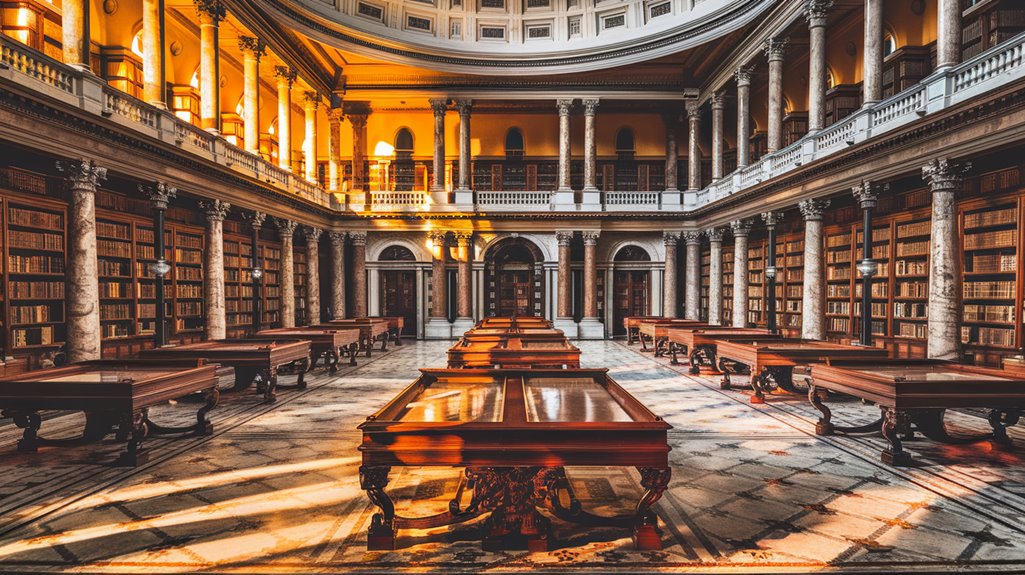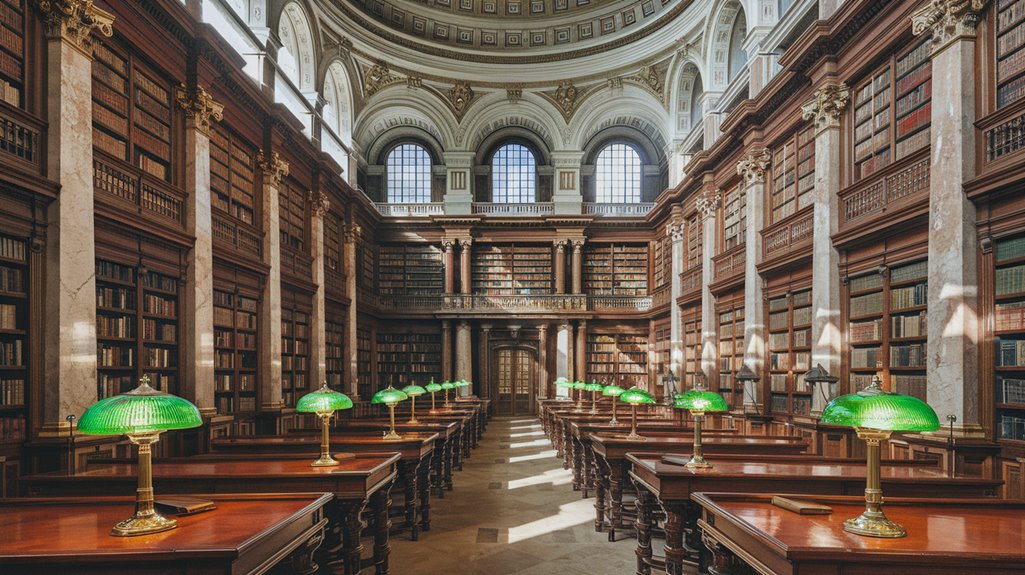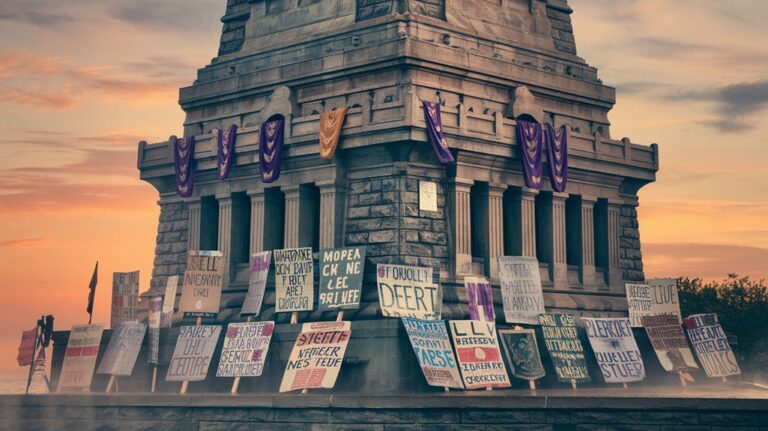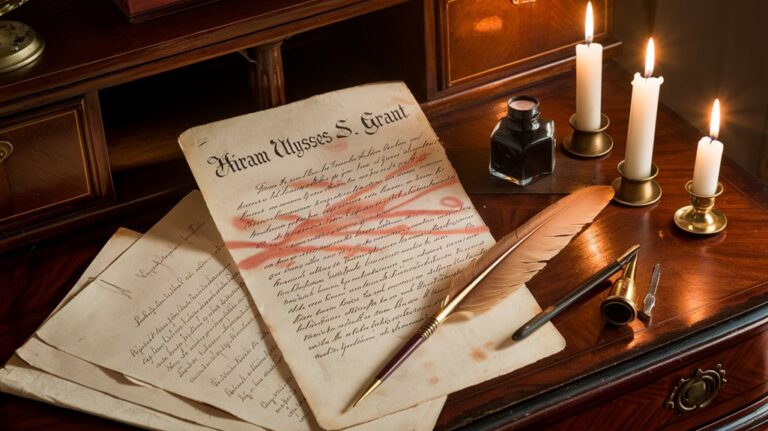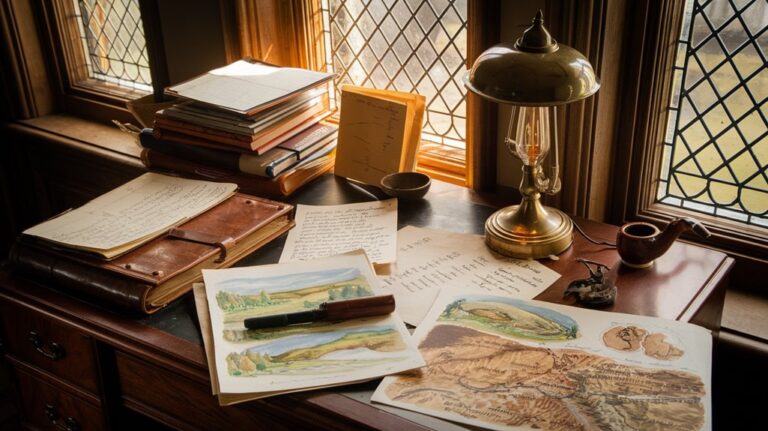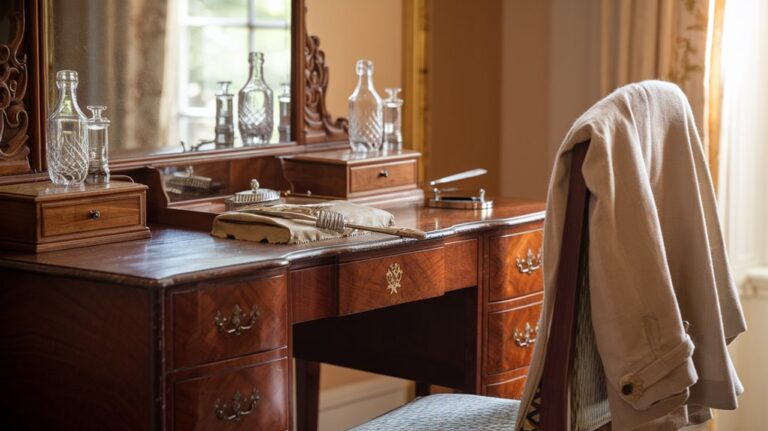America’s Oldest Cultural Institution Is the Library of Congress
Picture yourself standing in a vast marble hall where centuries of knowledge echo through towering columns and gilt-edged shelves. You're at the heart of America's oldest cultural institution, the Library of Congress, where a modest collection of 740 books has grown into an astounding treasury of over 175 million items. While you might know it as a tourist destination in Washington, D.C., there's much more to this iconic institution's story that challenges everything you've assumed about its role in shaping the nation.
The Birth of a Nation's Library
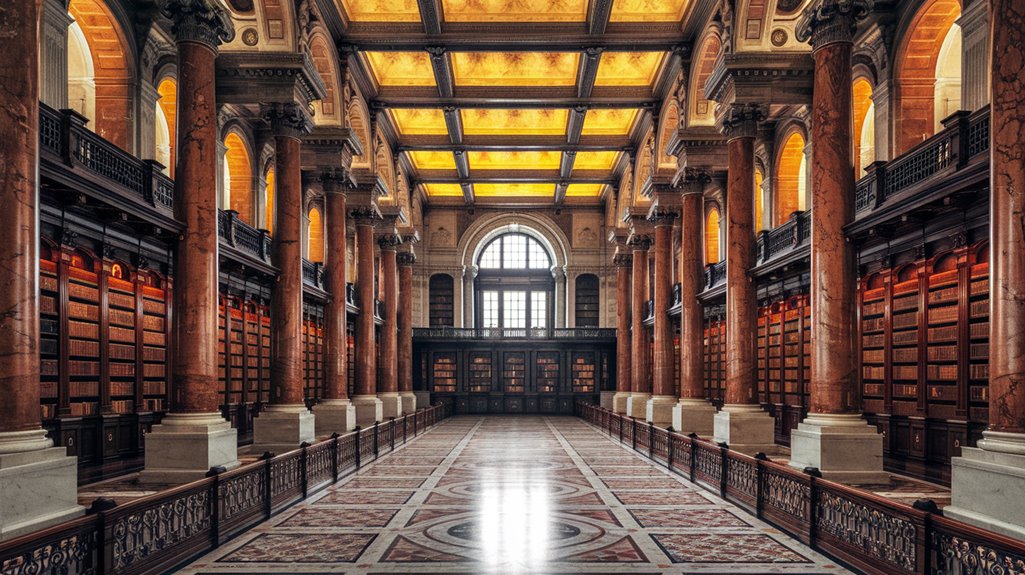
As the young United States established its new government, the need for a congressional library became increasingly clear. On April 24, 1800, President John Adams took a decisive step by approving $5,000 for the purchase of essential books and maps, establishing one of the nation's foundational principles: the importance of knowledge in governance.
You'll find the library's humble beginnings in the U.S. Capitol building, where it started with just 740 books and three maps ordered from London. The library has since grown exponentially to become the world's largest, housing over 175 million items.
These legislative resources were specifically chosen to support Congress in their decision-making processes. The Library of Congress wasn't initially meant to be the vast institution you know today – it was created with the focused purpose of serving congressional members who needed reliable information to guide the young nation's development. The concept originated from James Madison's proposal in 1783, years before the library's actual establishment.
Thomas Jefferson's Vision and Legacy
When British forces burned the original Library of Congress in 1814, Thomas Jefferson stepped forward with a transformative offer – his personal collection of 6,487 books. Congress purchased his diverse collection for $23,950, establishing the foundation for what you'd recognize today as America's greatest library. James Madison's proposal in 1783 first introduced the concept of a congressional library.
Jefferson's ideals of knowledge democracy shaped the institution's core mission of universal access to information. Today's restoration team uses green and gold ribbons to distinguish original volumes from replacements.
- Books spanning philosophy, science, law, and multiple languages
- Green ribbons marking original Jefferson books, gold for replacement copies
- Extensive collecting policies influenced by Jefferson's vision
- Copyright registration centralization in 1870 expanding collections
- Free access to information as a cornerstone of democracy
The restoration of Jefferson's collection continues to inspire the Library's commitment to preserving and sharing knowledge, making it an essential pillar of American democracy.
Major Turning Points and Challenges
Throughout its 200+ year history, the Library of Congress has faced pivotal moments that shaped its evolution from a small congressional reference collection into America's premier cultural institution.
You'll find that early challenges included devastating fires – one from British forces in 1814 and another accidental blaze in 1851 that destroyed thousands of volumes. These setbacks led to improved safeguards, including a new fireproof facility.
Thomas Jefferson's personal library of approximately 3,000 volumes helped restore and revitalize the collection after the first devastating fire.
The Library's legislative evolution transformed it from a simple repository into a multifaceted institution.
The 1870 copyright centralization and the 1946 creation of the Congressional Research Service expanded its role dramatically.
In recent decades, digital preservation has become essential, with initiatives like NDIIPP addressing the challenges of preserving America's digital heritage.
You'll see this commitment reflected in the Library's response to events like 9/11 and COVID-19.
The Library's Buildings Through Time
The Library of Congress's architectural journey began modestly in 1800 within the Capitol Building, before evolving into today's magnificent three-building complex on Capitol Hill.
After the British destroyed the original collection in 1814, you'll find that building renovations and expansions became essential to accommodate the library's growing needs.
The architectural styles shifted dramatically when Congress approved a new building in 1886, leading to the construction of the Beaux-Arts Thomas Jefferson Building. The building's stunning 23 carat gold dome became one of its most distinctive features, setting it apart from other government buildings.
- Thomas Jefferson Building (1897): Features classical Italian Renaissance design and elaborate interior decorations
- John Adams Building (1939): Originally called The Annex
- James Madison Memorial Building (1976): Newest addition to the Capitol Hill complex
- Underground passageways connect all three buildings
- Packard Campus (2007): Houses audio-visual collections in Culpeper, Virginia
Hidden Treasures and Collections
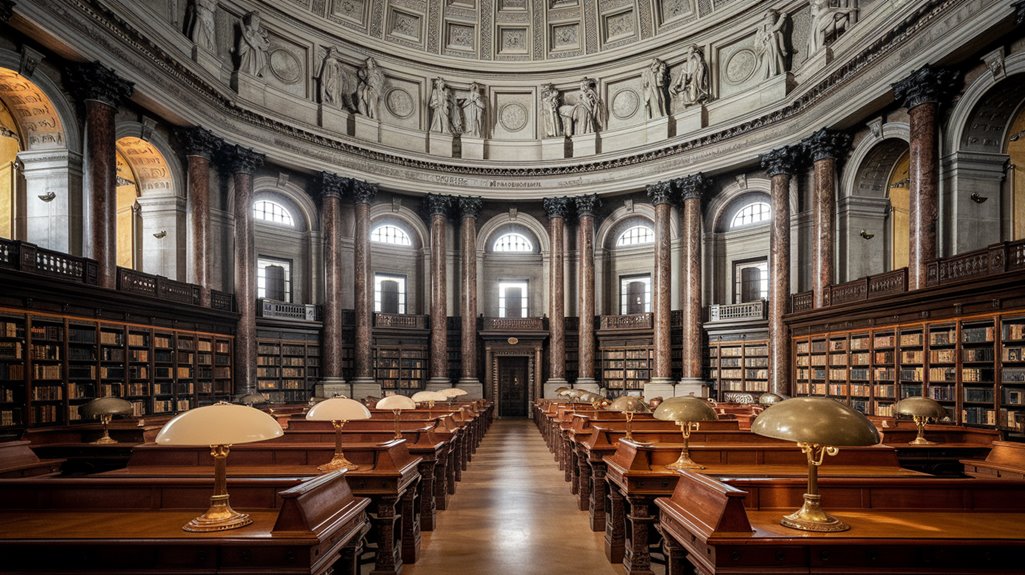
Inside the vast halls of the Library of Congress lies an extraordinary collection of hidden treasures that span centuries of human knowledge and creativity.
You'll discover hidden manuscripts like Thomas Jefferson's multilingual collection and rare incunabula from the 15th century. The library houses over 16,000 early American imprints, including the historic Columbus letter of 1493.
Among its cultural artifacts, you'll find Harry Houdini's personal belongings, James Madison's crystal flute, and the nation's largest comic book collection. The gallery showcases Lincoln's pocket contents from the night of his assassination in 1865.
International treasures include medieval European illuminated manuscripts, ancient Egyptian papyri, and Asian scrolls from Nepal, Laos, and Malaysia. The library's extensive map collection features early cartographic works of the Americas and unique hand-drawn maps created by explorers.
You can explore these wonders in the David M. Rubenstein Treasures Gallery or through the library's online platform, making centuries of knowledge accessible to everyone.
Preserving America's Cultural Heritage
Since its establishment, America's cherished cultural heritage has found a devoted guardian in the Library of Congress's preservation program.
You'll find cutting-edge environmental control systems that maintain precise conditions, with special vaults kept at 50°F and 50% humidity. The Library's commitment to both physical and digital preservation guarantees that future generations will have access to these invaluable materials.
- Special containers purged with argon gas protect fragile documents
- Double UV-filtering acrylic glazing shields items during display
- State-of-the-art Digital Scan Center increases production capacity
- Over 9 million items digitized, including newspapers and manuscripts
- Advanced research facilities tackle machine-readable media preservation
Through systematic digitization and environmental control measures, the Library's not just preserving history – it's making it more accessible than ever while protecting against natural disasters, conflicts, and other threats to our nation's documentary heritage.

